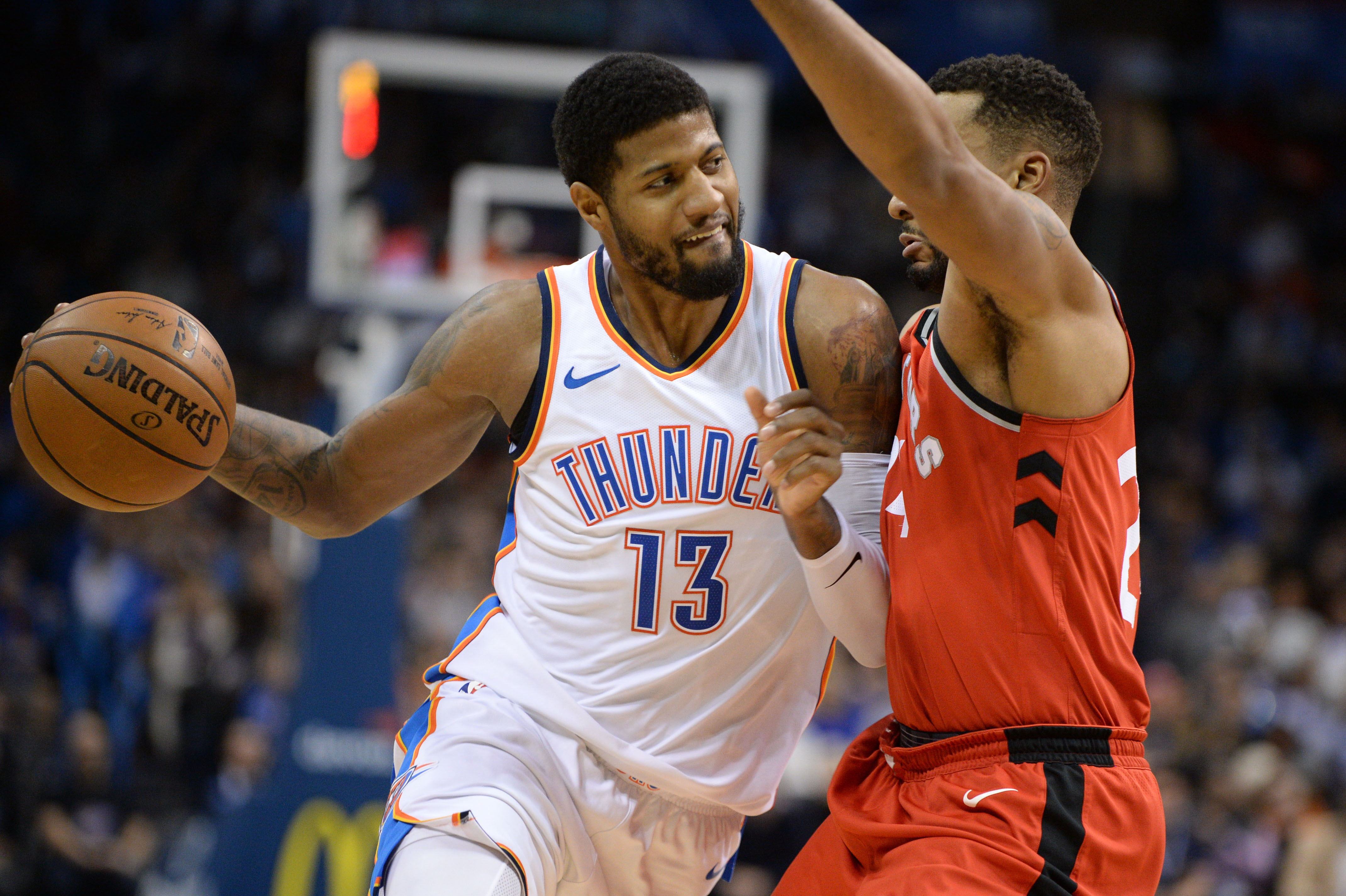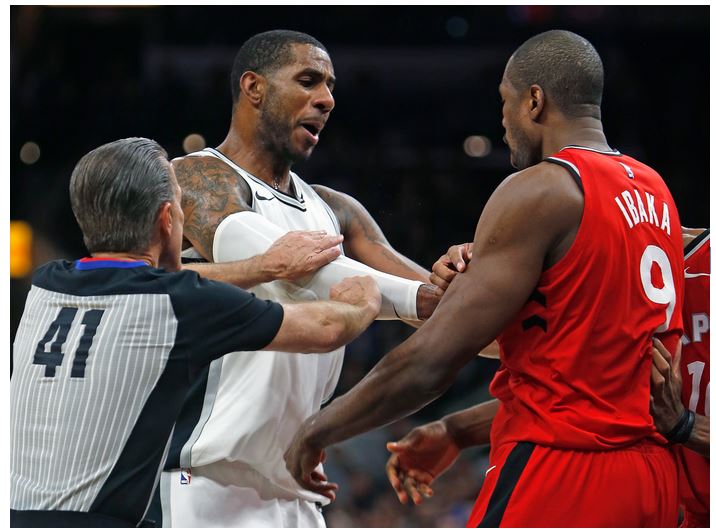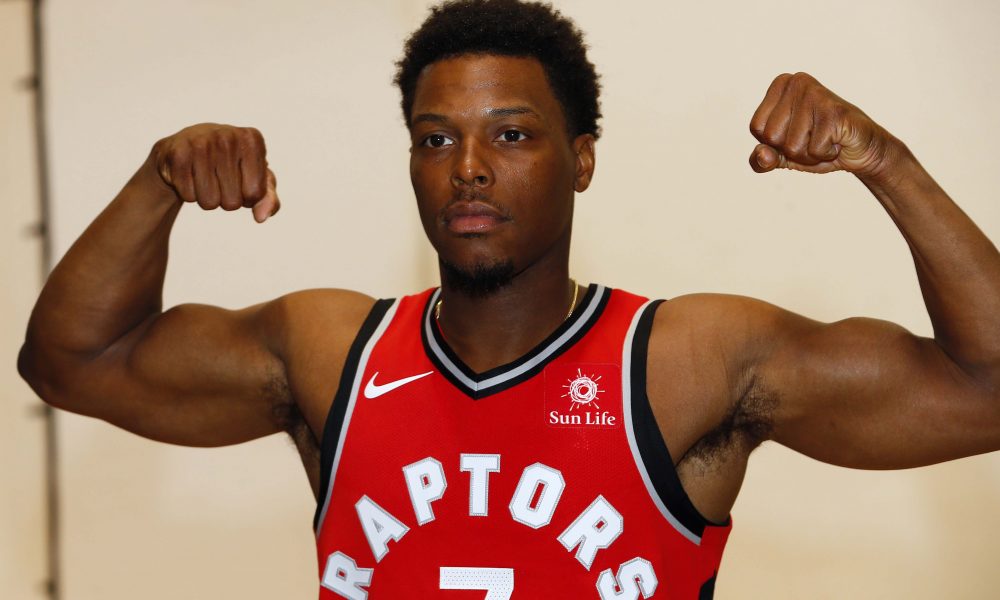How can a player still be an important role player despite being the offensive basketball version of Suicide Squad? By locking up on D. This is a follow-up story to a feature I wrote on Norman Powell’s offence last week. And seriously, his offence has been juuuuust about this bad. However, Dwane Casey continues to keep Norman Powell in the rotation. This has largely been due to Powell’s ability on the defensive side of the ball, where the rumours of his game have been greatly exaggerated.
This is also something of a sequel to a film study I did on O.G. Anunoby’s defensive efforts against LeBron James. This has a similar focus on film, but only drawn since January 1st (for the purpose of identifying him quickly in the film clips below, Powell is number 24 in your programs). Anunoby and Powell are both important defensive weapons for a team somewhat light on sizeable wing defenders, and they have their similarities. Anunoby might be best thought of as Arnold Schwarzenegger from Terminator 1: huge, with the awareness of a computer (usually), and relentless. Powell, in this comparison, would be Robert Patrick from Terminator 2: lithe, liquid, and relentless. If somewhat forgetful.
Powell has the tools to be one of the better perimeter defenders in the league. Standing at 6’4”, but with a 6’9” wingspan, Powell has the reach to contest almost any shot from the perimeter. His block (1.0%) and steal (1.8%) rates on the season are both terrific for his position, per Cleaning the Glass. He’s an athletic marvel, with apparently a 40” vertical, comparable to prime-Derrick Rose. Powell is so slithery and quick that he can avoid multiple screens and retain perfect defensive positioning through as many actions as an offence can use in 24 seconds. His balance is somewhat superior to his mechanical counterpart.
Powell has had a strong defensive stretch in 2018. Powell is quite talented at chasing players above on- or off- ball screens. Here he is sliding around or fighting through off-ball screens to blow up opponents’ actions:
While in the first play, Powell records a steal, not all good defence will result in notations in the box score. In the second play, coming as a result of the same offensive action as the first, Powell jets up alongside an off-ball screen to stay attached to his man’s hip. He slides in front of him, thus negating any advantage gained. In the third, fourth, and fifth clips, Powell fights through baseline screens – or switches expertly with Fred VanVleet, as in the fourth play – to deny any open opening.
Powell also shows the ability to defend through screens on-the-ball. Unlike some of his teammates *cough, Lowry, cough*, Powell almost never dies on screens, but fights, slides, or grapples his way back into the play to either recover entirely or at least apply a high-level rearview contest to any shot attempt.
In all three of the above plays, Powell goes above the ball screen and scrambles back to his mark, either to block the shot or recover beautifully to negate any offensive advantage. Powell’s athleticism and skill makes him an expert defender of the pick and roll ballhandler. Indeed, he has only allowed 0.70 points per possession on the season while defending the handler in the PnR, good for 82.8th percentile league wide. He allows a similarly stingy 0.76 ppp while defending players coming around off-ball screens (84.5th percentile).
The final play in which Powell fights through screens is the handoff. These act similar to on-ball screens, in that Powell must fight above the screener and put pressure on his initial mark from behind – all without fouling.
In the first clip, Powell perfectly mirrors Avery Bradley’s cuts, then chases him around a handoff to force a turnover. In the second and third clips, Powell recovers entirely to stymie any advantage gained and force the offence to reset. In the fourth clip, Powell mirrors Wayne Ellington’s cuts so exactly that a forced pass to the cutter results in a turnover. In the final play, Powell forces an airball from Ellington, who was clearly distracted by Powell living inside of his jersey.
Powell’s defensive metrics don’t tell the whole story over this stretch. Powell got few minutes against Chicago (3), Brooklyn (6), Miami (2), or Philadelphia (0). Similarly, his defensive rating was bolstered by the blowout over Cleveland. His defensive rating since January 1st has been a mediocre 104.7, but that doesn’t relate the quality of Powell’s individual defence.
Over the whole season, Norman Powell’s defensive metrics are far better when he logs his minutes at small forward than when he plays as a shooting guard. Some of that is surely noise, as he has only played 282 possessions as small forward (85.4 points per 100 possessions allowed) compared to 957 possessions at shooting guard (111.1 points per 100 possessions allowed). While the position is largely interchangeable for the Raptors, as both positions are merely ‘wings’, the difference is so stark that there must be something there.
Specifically, Powell’s minutes at small forward have come alongside two of Fred VanVleet, Kyle Lowry, and Delon Wright. Each is an excellent team defender, which improves Powell’s numbers dramatically. At shooting guard, Powell’s other wing is always DeMar DeRozan or C.J.Miles, neither of whom is able to cover up for teammates mistakes on the defensive end. In Powell’s 10 possessions next to O.G. Anunoby as the small forward, the team has only allowed 60.0 points per 100 possessions.
Much of Powell’s defensive utility is in his ability to switch seamlessly. But if he’s playing with another wing who doesn’t quickly identify or correctly execute a switch, Powell’s game is toast. I’ve written about how Miles’ defence has hurt the Raptors. DeRozan, despite general improvement this season, is still, at best, an average defensive player in most situations:

When playing with defenders who can think the game, Powell’s ability is unlocked. Some of his most impressive defensive possessions came alongside Fred VanVleet in the 4th quarter of the Golden State game and Lorenzo Brown in the 4th quarter of the Miami game.
Certainly, Powell’s defensive value can be limited by his proneness to being caught unaware. Against Golden State, this equals immediate death. The Raptors started Powell on Shaun Livingston in the second quarter, but they were content switching him onto Draymond Green. When Fred VanVleet was unable to contain Klay Thompson, who shot right over him, Powell switched onto Thompson. He was able to deny open looks for Klay, but he several times fell out of position, or was back cut, for easy points.
In the first clip from the Pistons game, Powell failed to tag the cutting Boban Marjanovic, leaving a simple lob pass to the big. In the second play, he falls asleep and doesn’t contest a 3. In the final clips against Golden State, Powell is beat by simple cuts to the basket (both plays during the second quarter).
Powell’s defence in the fourth quarter of the Warriors game was another story. He was as engaged as he’s ever been (big game Powell!) during the Raptors’ run. Powell proved that there’s no better defender in the league for a player like Klay Thompson. He perfectly stayed behind and above him on screens, forcing Thompson to catch the ball on the move and stay moving, without giving him an opening to shoot. Powell used his quickness and length to do what almost no one in the league can: make Thompson give the ball up, or at least drive. Many of the successes in the above videos, in on- or off- ball action, were drawn from the fourth quarter of the Warriors game.
Powell offers defensive utility beyond his chops against guards and wings. Toronto is comfortable with him defending bigger players in the post. Here he defends a Shaun Livingston and then a Kevin Love post-up as well as anyone can. Take note in the Love clip: this was not on a switch! Toronto started Powell on Love from the ATO, and the team was happy giving Love a 1-on-1 (with some late help from Poeltl) attempt. Per Synergy Sports, Powell only gives up 0.86 ppp on post-ups, and Love scores 0.99 ppp on the same plays; this will matter (as it has in years past) come playoff time.
A player who can defend shooters coming around off-ball screens, ball handlers using on-ball screens, and big men posting up in the paint is invaluable. Powell can switch screens or fight over them to deny any action the offence throws at him. His defence has been impressive, though prone to mental lapses. For every layup Powell hurls off the rim or jumper Powell vomits into the air, you can trust that his effort and ability will earn those losses back on the other end.



